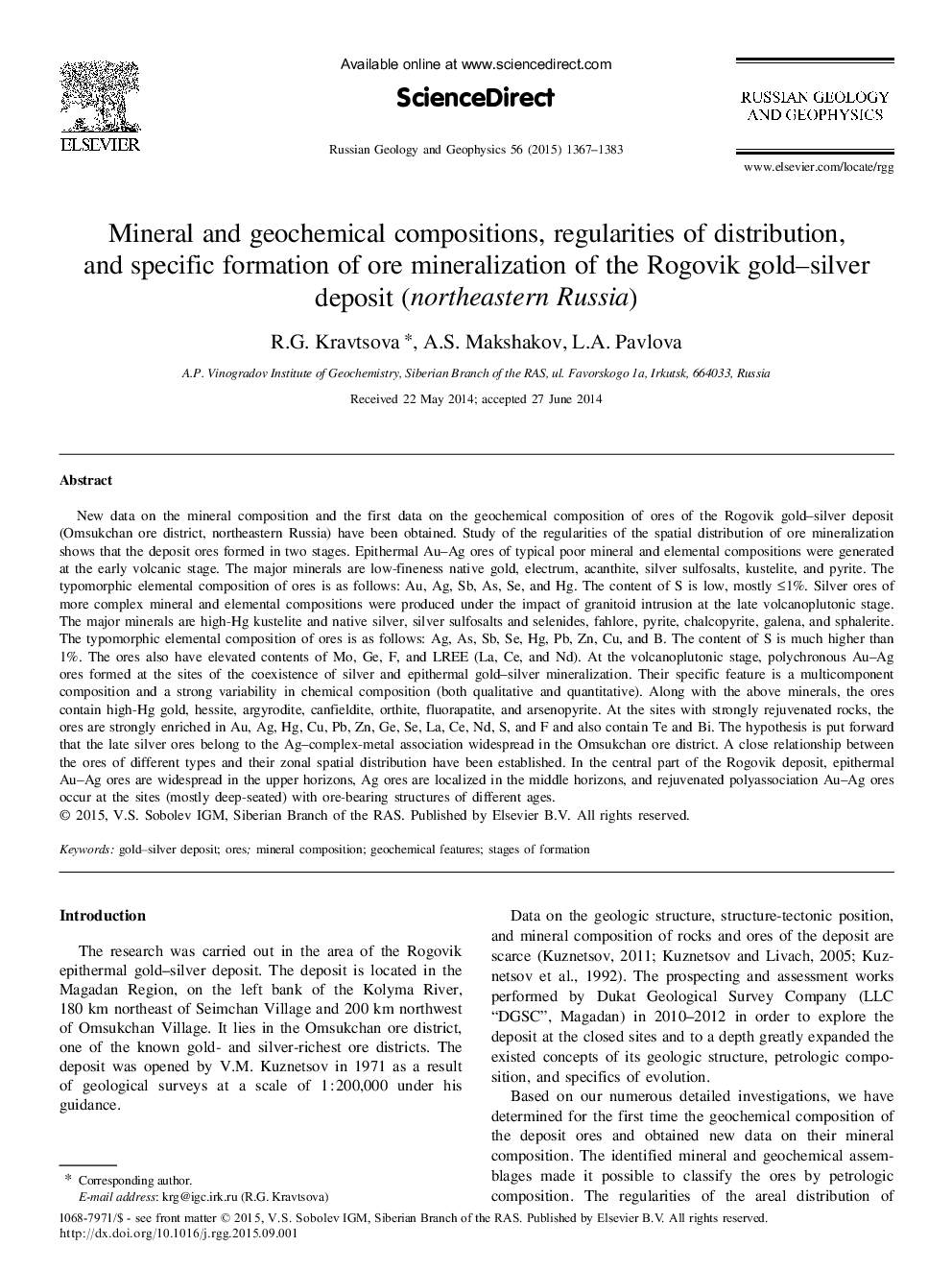| Article ID | Journal | Published Year | Pages | File Type |
|---|---|---|---|---|
| 4738909 | Russian Geology and Geophysics | 2015 | 17 Pages |
New data on the mineral composition and the first data on the geochemical composition of ores of the Rogovik gold-silver deposit (Omsukchan ore district, northeastern Russia) have been obtained. Study of the regularities of the spatial distribution of ore mineralization shows that the deposit ores formed in two stages. Epithermal Au-Ag ores of typical poor mineral and elemental compositions were generated at the early volcanic stage. The major minerals are low-fineness native gold, electrum, acanthite, silver sulfosalts, kustelite, and pyrite. The typomorphic elemental composition of ores is as follows: Au, Ag, Sb, As, Se, and Hg. The content of S is low, mostly < 1%. Silver ores of more complex mineral and elemental compositions were produced under the impact of granitoid intrusion at the late volcanoplutonic stage. The major minerals are high-Hg kustelite and native silver, silver sulfosalts and selenides, fahlore, pyrite, chalcopyrite, galena, and sphalerite. The typomorphic elemental composition of ores is as follows: Ag, As, Sb, Se, Hg, Pb, Zn, Cu, and B. The content of S is much higher than 1%. The ores also have elevated contents of Mo, Ge, F, and LREE (La, Ce, and Nd). At the volcanoplutonic stage, polychronous Au-Ag ores formed at the sites of the coexistence of silver and epithermal gold-silver mineralization. Their specific feature is a multicomponent composition and a strong variability in chemical composition (both qualitative and quantitative). Along with the above minerals, the ores contain high-Hg gold, hessite, argyrodite, canfieldite, orthite, fluorapatite, and arsenopyrite. At the sites with strongly rejuvenated rocks, the ores are strongly enriched in Au, Ag, Hg, Cu, Pb, Zn, Ge, Se, La, Ce, Nd, S, and F and also contain Te and Bi. The hypothesis is put forward that the late silver ores belong to the Ag-complex-metal association widespread in the Omsukchan ore district. A close relationship between the ores of different types and their zonal spatial distribution have been established. In the central part of the Rogovik deposit, epithermal Au-Ag ores are widespread in the upper horizons, Ag ores are localized in the middle horizons, and rejuvenated polyassociation Au-Ag ores occur at the sites (mostly deep-seated) with ore-bearing structures of different ages.
